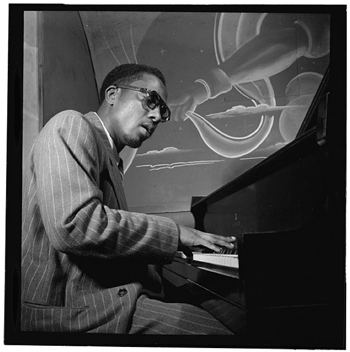 “Late one evening, outside the Open Door in Greenwich Village, [Charlie] Parker, shuffling along in a pair of old carpet slippers, bumped into Jackie McLean. . . ?I want you to kick me in the ass, Jackie McLean, for letting me get myself in this position,? Bird commanded, bending over … A few days later Parker borrowed McLean’s sax to make an out-of-town gig, a sax McLean had himself borrowed from a friend; Parker pawned it.”
“Late one evening, outside the Open Door in Greenwich Village, [Charlie] Parker, shuffling along in a pair of old carpet slippers, bumped into Jackie McLean. . . ?I want you to kick me in the ass, Jackie McLean, for letting me get myself in this position,? Bird commanded, bending over … A few days later Parker borrowed McLean’s sax to make an out-of-town gig, a sax McLean had himself borrowed from a friend; Parker pawned it.”
– from Birth of the Cool: Beat, Bebop, and the American Avant Garde, by Lewis MacAdams
The above is one of the sadder moments from the decadent stage of one of the most important periods in American cultural history, an era whose phenomenal gifts could never have been handed out to the world were it not for certain peculiarities of the African-American saga and the intertwining of these peculiarities with the development of European avant garde art .
But first, let’s define our terms.
What’s “Cool” and What’s Not?
Here of course we’re not talking about “cool” as the now rarely-heard adjective for all things good, happy, amazing, or fun. Serious American jazz artists invented the original “cool” as a way of being, a state characterized by a kind of social abdication; a disengagement from, and perhaps even a defiance toward, American conventions, racism, the cold war, atom bomb hysteria, a constrictive art world, and a narrow, commercial entertainment industry.
The original cool didn’t make a distinction between high and low art?all things were one in cool. Cool embraced a sense of freedom, newness, openness, and a special membership within a highly desirable elite. Cool emerged from the American jazz culture that sprouted up during and after World War II and was quickly embraced the world over?along with the jazz that spawned and carried it?by youth who saw cool as the way they were and ought to be.
Cool was an inconspicuously rebellious stance that, on the surface, looked like an unflappable calm, such as you might see in Humphrey Bogart in his early films, a demeanor that steadfastly refused to be humiliated, embarrassed, flustered, demeaned, controlled, or fooled. It was an impossible ideal, within the reach mostly of a race that had suffered so much that almost nothing could hurt or scare it anymore, but when the youth in the rest of the world saw it they knew that was what they wanted to be.
Off the bat, bebop jazz and the free jazz it lead to were cool; classical, folk, and pop music were not. Being a musician was cool, selling out was not (Cab Calloway, though marketed as an early mascot of cool, wasn’t truly cool because he stood in the way of musical innovation; Dizzy Gillespie and Charlie Parker were the cool ones). Communism was not cool, but talking about it while wearing a black turtleneck and smoking in a café certainly was. Realist art was cool if it was unsentimental and carried a dissident message. Avant garde art was cool almost by definition.
What is the “Avant Garde,” Really?
Avant garde art, whose most common manifestations in America emerged in the form of Dadaism, Abstract Expressionism, Minimalism, and Pop Art, broke boundaries in terms of tools, methods, rules, expressed beliefs and values, methods of distribution, and products. It also blurred the distinction between high and low culture, allowing “lower” art forms to rise and fulfill their potential within the echelons of high art.
(For a more in-depth explanation of the avant garde, see this Voice Magazine article from 2011.)
(To be continued.)
References
MacAdams, Lewis. (2001) Birth of the Cool: Beat, Bebop, and the American Avant Garde., New York: The Free Press
Garlitz, Dustin. (2004, October) Outstanding Avant-Garde Tenor Saxophonists

